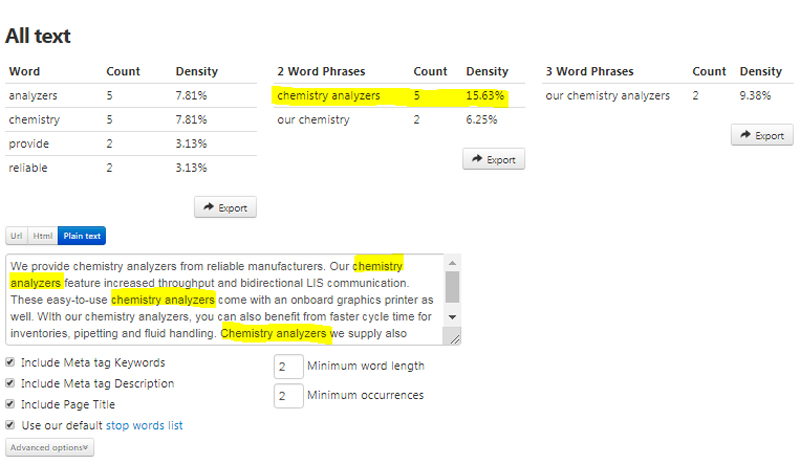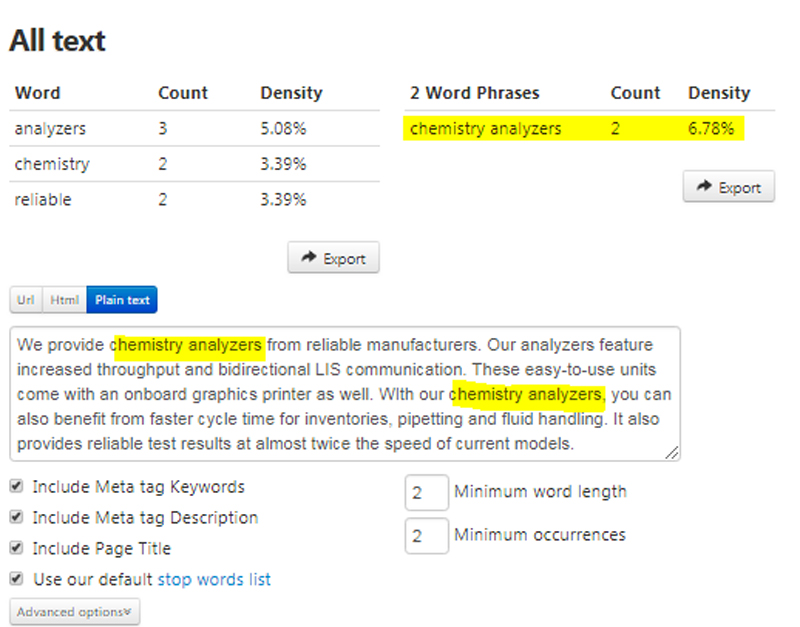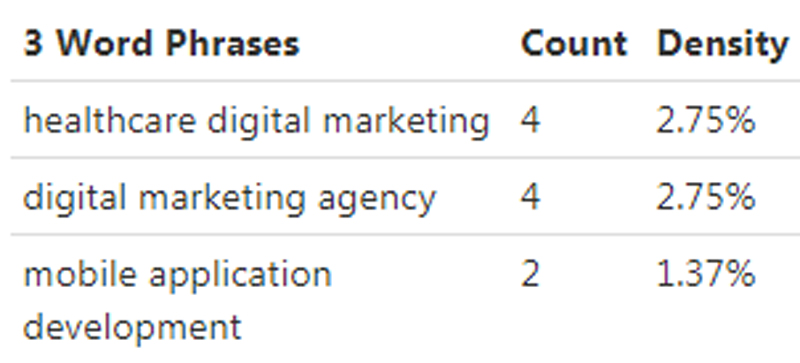Quality content with relevant keywords plays a crucial role in digital marketing. There’s a myth that still exists – using keywords many times in the content will lead to higher search engine rankings. The fact is that keyword spamming will lead to SEO penalties. Keyword density is referred to as the percentage of times a keyword appears on a page compared to the total number of words on that page.

Search engines appreciate keeping a good keyword density percentage which looks natural and not stuffed. However, there seems to be no ideal or exact percentage for better ranking. Instead it is recommended to write natural content by placing keywords in natural places. Being an experienced Long Island SEO company, we recommend keeping your density around 1.5% to 2%.
According to Google, “Filling pages with keywords or numbers results in a negative user experience, and can harm your site’s ranking. Focus on creating useful, information-rich content that uses keywords appropriately and in context.”
It has been reported that the standard formula of high-quality content is keyword research + good writing + on-page SEO. Keyword stuffing can be avoided by identifying the right spots to add the suitable keywords, by choosing long-tail keywords and by using synonyms of certain keywords.
Here’s a clear example of how keyword stuffing can impact your density percentage. The keyword “chemistry analyzers” is targeted. When this keyword is stuffed the density was 15.63%, whereas it reduced to 6.78%, when used in a natural way. We used the tool SEO Book to check keyword density and those changes are highlighted.


(Source: http://tools.seobook.com/general/keyword-density/)
Include Keywords Naturally
Here’s what Matt Cuttshas to say about the ideal keyword density
Matt Cutts recommends writing natural articles, by placing keywords in natural places, which will work the best. According to him, “Lots of people think there’s one recipe and you can follow that like baking cookies and if you follow it to the letter, you’re no.1. That’s not the case. That’s not the way search engine rankings work. Think about the keyword that you like to have in a copy. Make sure the copy is long enough so that you can work those keywords in it in a natural way and not in an artificial way.” Matt Cutts also recommends reading your content aloud or reading it to someone else and checking whether they spot anything artificial. Trying to get the same phrase on the same page as many times as possible really looks vague.
However, according to an article in shoutmeloud.com, 1-3% of keyword density along with “semantic keywords” and LSI keywords works.

(Source: http://tools.seobook.com/general/keyword-density/)
Trying to stuff every keyword in a single page or blog won’t work, and it will impact your ranking as well. To avoid content that reads like spam, make sure that your content flows naturally and thoroughly cover all of the relevant sections.
Where to Add Your Keywords
Add your keyword in the blog, article or web page in the following places:
- Permalink
- H1 tag
- H2 tag
- Meta title tag
- Beginning of your content
- End of the content
- Incorporate suitable images and anchor them using your target keyword; but avoid keyword stuffing


Write for Your Target Audience, Not Just for Keywords
Before you start writing a blog, page or even a PPC ad, make sure you know whom you are writing for. Knowing your reader also helps to know exactly what they’ll be looking for. The content should be informative for the targeted reader. An ideal piece of content will make the audience feel that it is written directly for them, and so are more likely to convert.
Do Better Keyword Research
Even if you have a list of target keywords in mind that you want to create content around, make sure those keywords are relevant to your website and are not highly competitive. Don’t just choose them just because your competitors are ranking for a term. Have a clear idea about where you’ll be using these keywords – in blog or article or PPT.
Key Takeaway Points
- Your content should look natural.
- Though keyword density is a valuable consideration, keyword stuffing must be avoided
- Use keyword variations for the best results
- Use LSI keywords
- Utilize an online tool or a WordPress SEO plug-in to check keyword density. Online keyword density calculators such as “Live Keyword Density Analysis”, “SEO Centro Tool”, and “SEO Chat Keyword Density Tool” are available to calculate keyword density. A provider of professional website marketing services can support you in this regard.
Remember that search engines, especially Google, give importance to the following aspects when it comes to ranking.
- Is your content useful?
- Is it authoritative?
- How informative is it?
- Are your articles and blogs and other forms of content receiving plenty of social signals?
- How many back links are you getting?
Keyword density is surely one of the signals Google takes into account when ranking a website. But there are many other signals as well. Therefore, keep in mind that while proper keyword density is favorable for your website, keyword stuffing will definitely be unfavorable.
When it comes to medical content writing, or content development for any other industry, organizations can partner with a reliable SEO company, which understands what keywords to use in what density when optimizing your site.




